|
The building was constructed in 1854 as Landport Hall. It was converted to a theatre two years later.
It was rebuilt in 1884 by Charles J. Phipps and again in 1900 by Frank Matcham. The theatre has been designated a Grade 1 building.
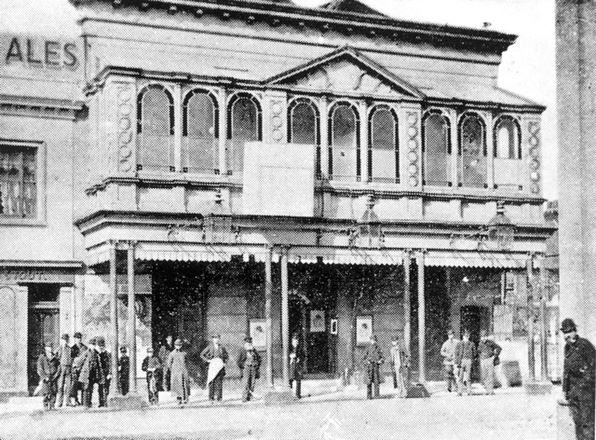
The Theatre Royal in 1860
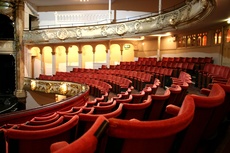
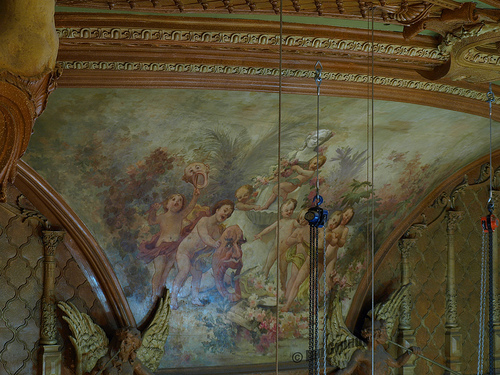
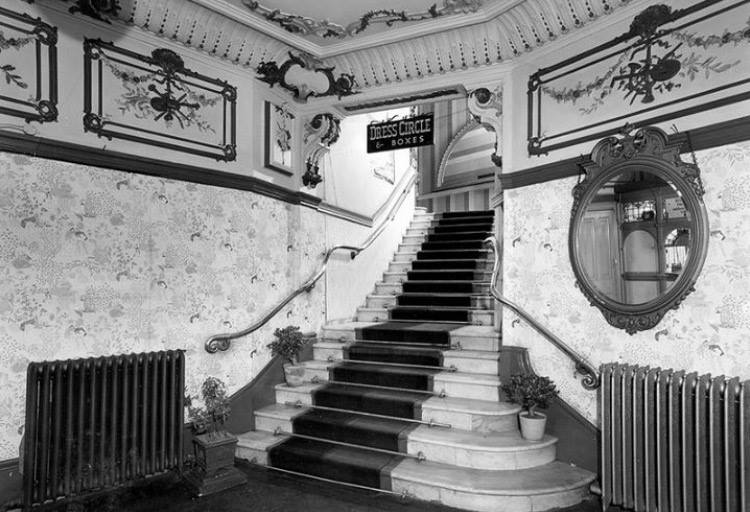
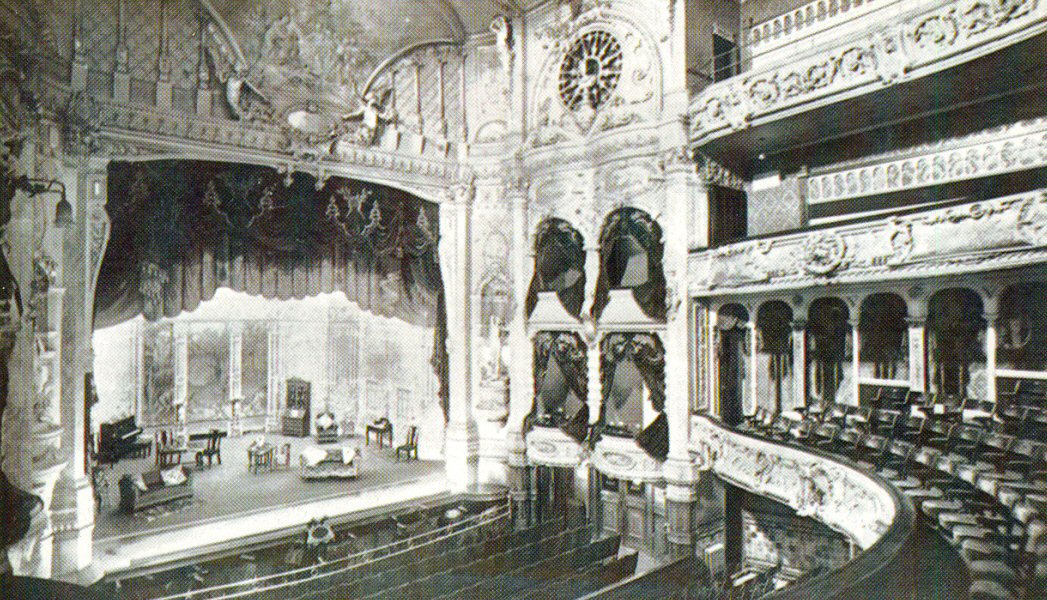
HENRY RUTLEY
Henry Rutley was born about 1816 in Newcastle. His father was a
Sergeant in the army who fought throughout the Peninsular War. His
mother accompanied her husband for the duration and, being an
excellent linguist, was of great assistance to the troops in their
communications with the Spaniards.
He was passionate about horses and this may have influenced his early
choice of career as Agent in Advance for many large touring circuses.
After a tour of Holland, Henry came to Portsmouth in 1854 with a large
equestrian establishment. He purchased a building called the Landport
Hall which was a racquet court attached to the Swan Tavern. Within a
short space of time he sold his share in the circus business and
converted the equestrian ring into an auditorium. At that time there
were no dramatic or lyrical theatres remaining in Portsmouth there
were, however, many music halls of a dubious nature and Henry's
application for a licence was viewed cautiously by the Magistrates. He
reassured them that the theatre was to be a place of entertainment for
the middle classes and went on to make a success of his new enterprise
opening The Theatre Royal in 1856.
Henry died 3rd March 1874 aged 59 years of dropsy from which he had
suffered for many weeks. His ghost is said to have been felt around the
theatre for many years. His young widow sold business to John
Broughton who built the Kings Theatre.
Grave Inscription Highland Road Cemetery
HENRY RUTLEY
DIED 3RD MARCH 1874
AGED 59 YEARS
PORTSMOUTH.
THETRE ROYAL (Lessee and Manager, Mr H Rutley June 1872.)
--This place
was reopened on Monday Mr Felix Rogers having been engaged to
reproduce his drama entitled Rip Van Winkle. The character of Rip
which he essays , has been made his own , and almost stands inimitable.
He brings with him a very fair company, who support him throughout
very creditably.
Among the names we may mention Massrs Henry
Chippendale, E H. Lynham J.B1ossom, D Ernest the Misses Marie
Duval E. W. Page, Reynolds, and Madame Dupont. Thu burlesque
of Aladdin terminates this evening.
|
11th August 1900 Refurbished Opening
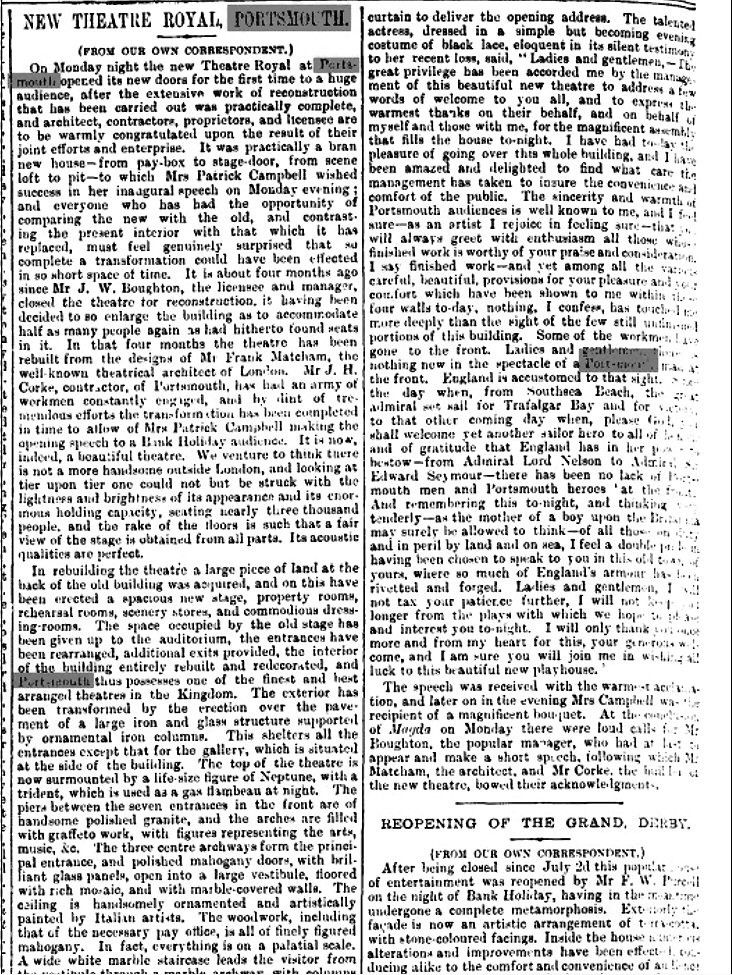
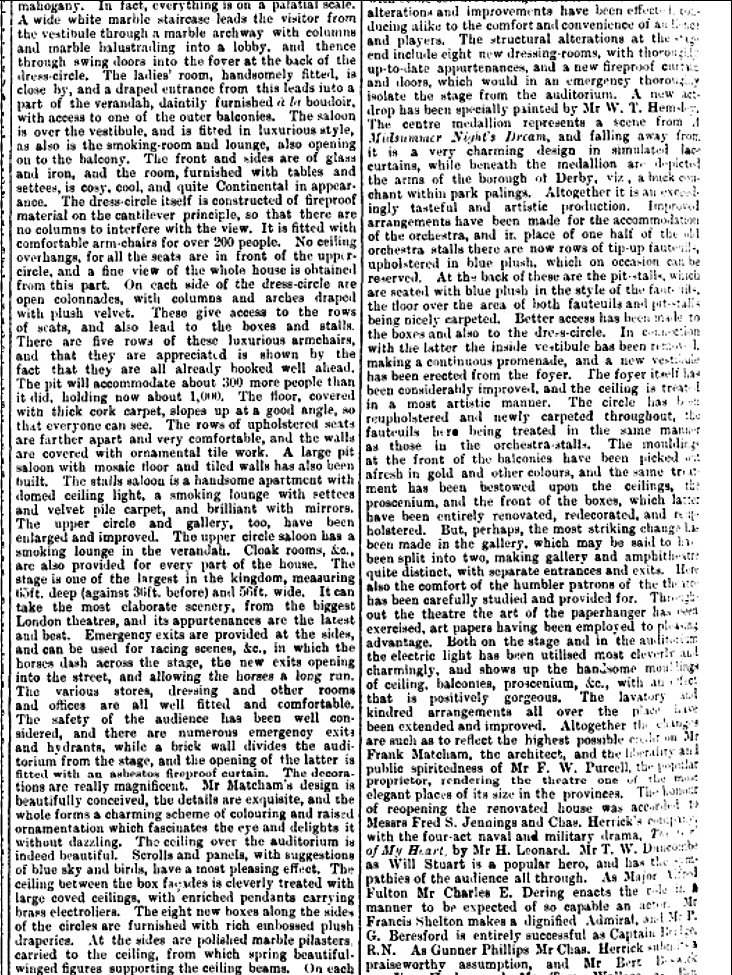
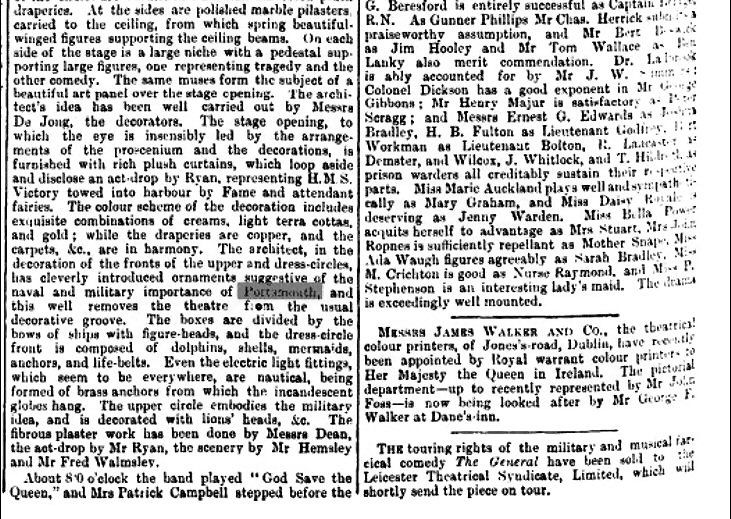
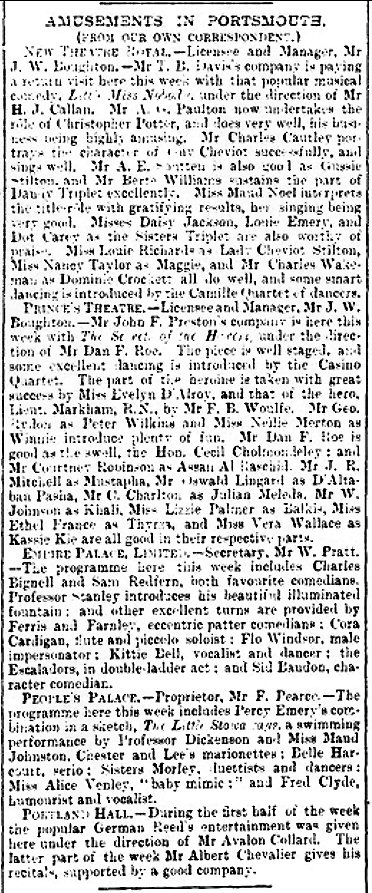
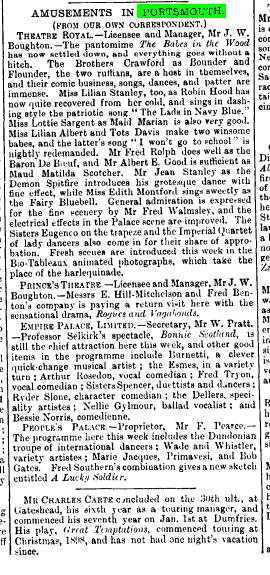
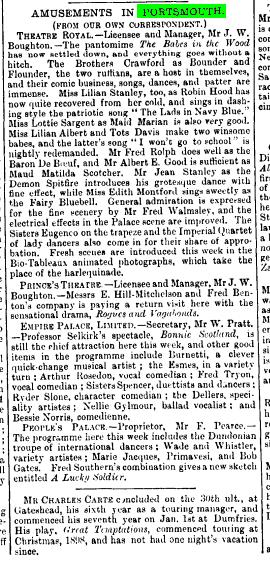
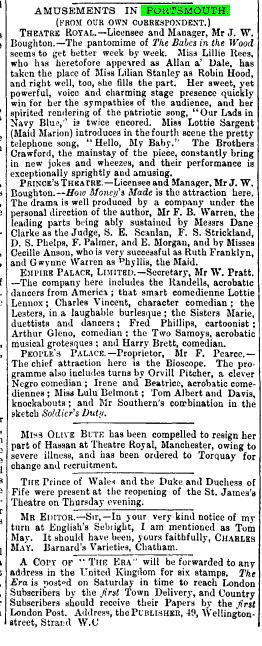

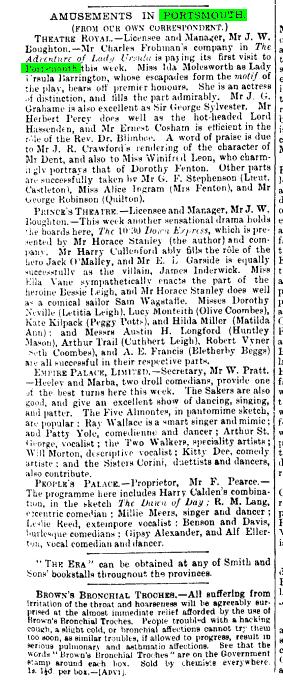
The six cuttings above date from 6th January 1900 to 17th March 1900
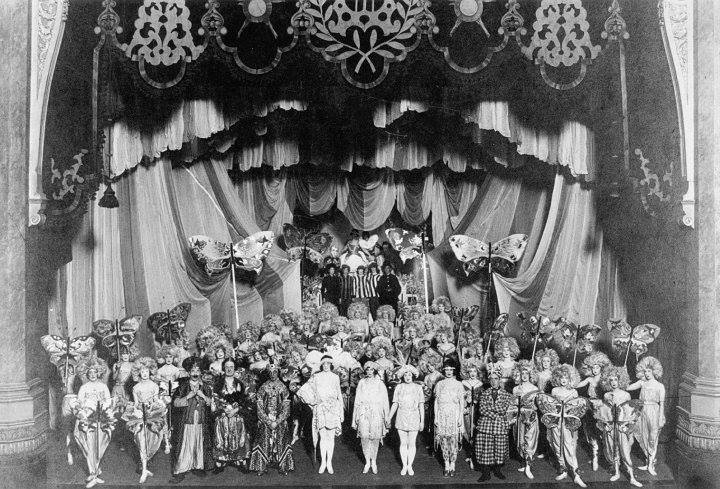
Ali Baba at the Theatre Royal circa 1923
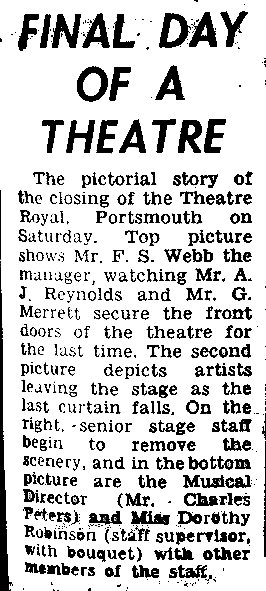
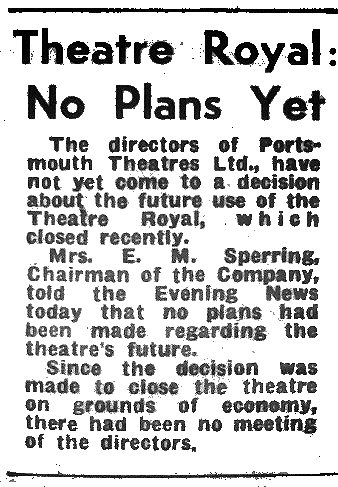
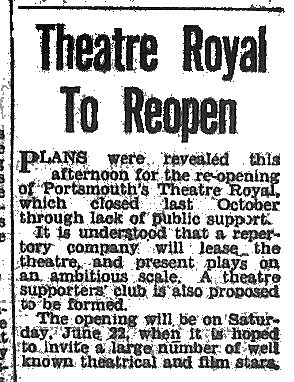
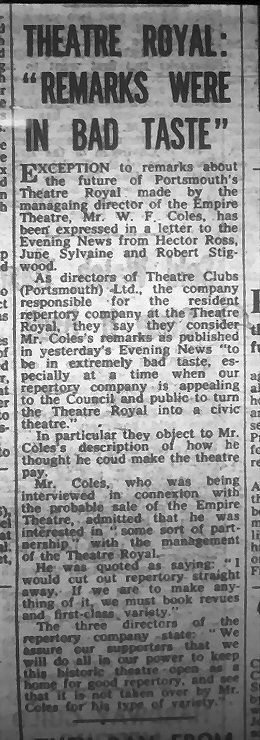
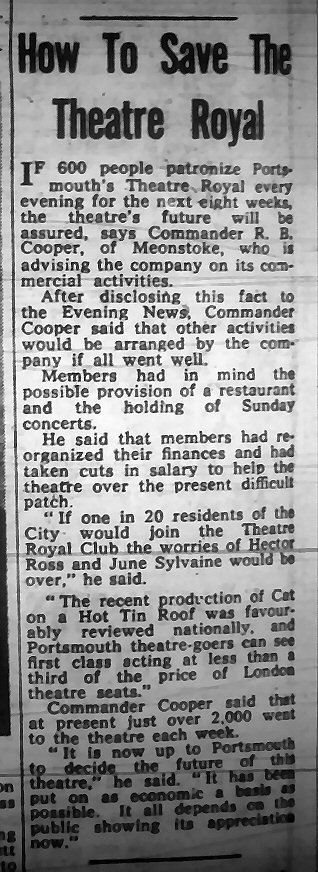
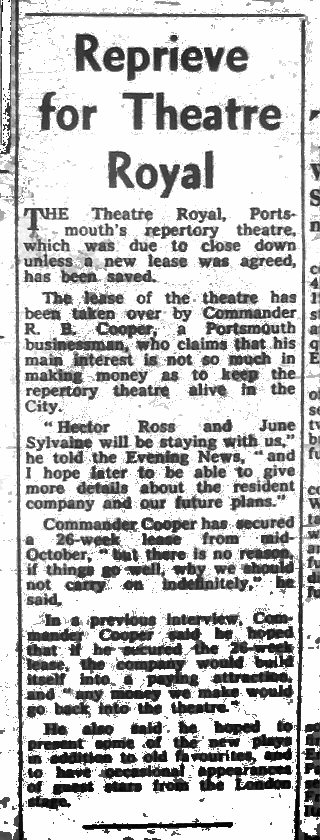
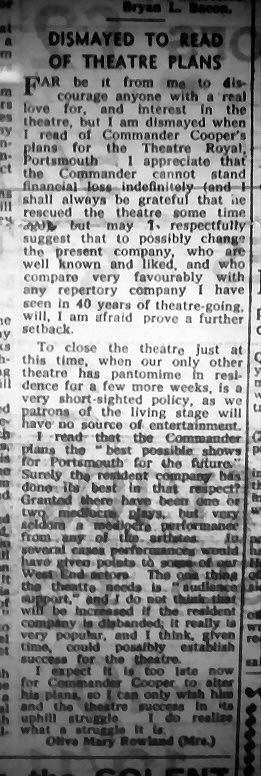
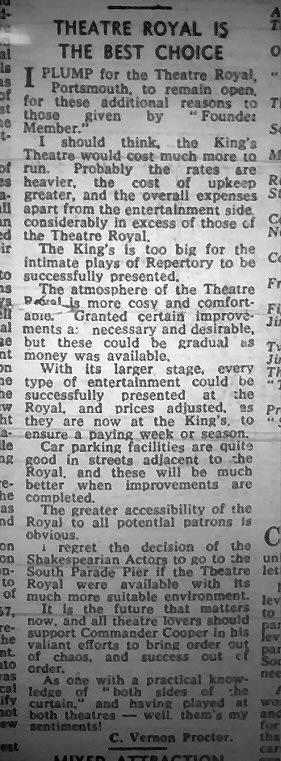
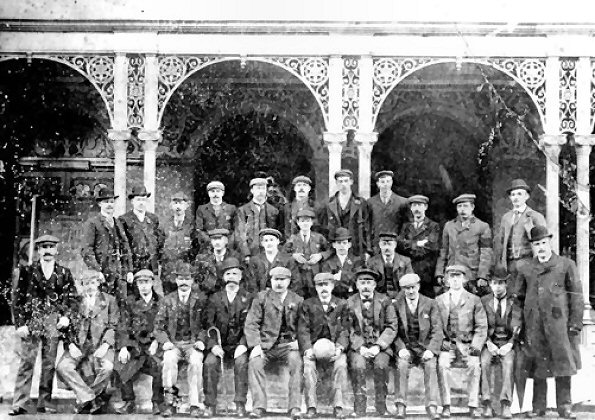
Theatre Royal staff outside the building about 1922.
Published on Monday 28 January 2013 Portsmouth NEWS
A historic picture from the archives of the New Theatre Royal, Portsmouth.
Unearthed by trustee Colin Bradey and a colleague who have undertaken the mammoth task of scanning and cataloguing the theatre’s archives.
It comprises posters, programmes, photographs and other material, some of it dating back to the 1880s.
This picture feature staff from the theatre which was then in the section of Commercial Road which has now renamed Guildhall Walk.
But they would also have worked at The Kings Theatre, Southsea, and The Prince’s Theatre, Lake Road, Landport, as they were all owned by Portsmouth Theatres Ltd at the time.
The picture above shows staff outside the Theatre Royal with the unmistakeable colonnade behind them.
The significance of what looks like a football in not known.
The theatre is a grade 2* listed Victorian building and one of the few remaining Phipps/Matcham working theatres in the world.
In 1972 a fire destroyed the back of house but the beautiful auditorium was saved.
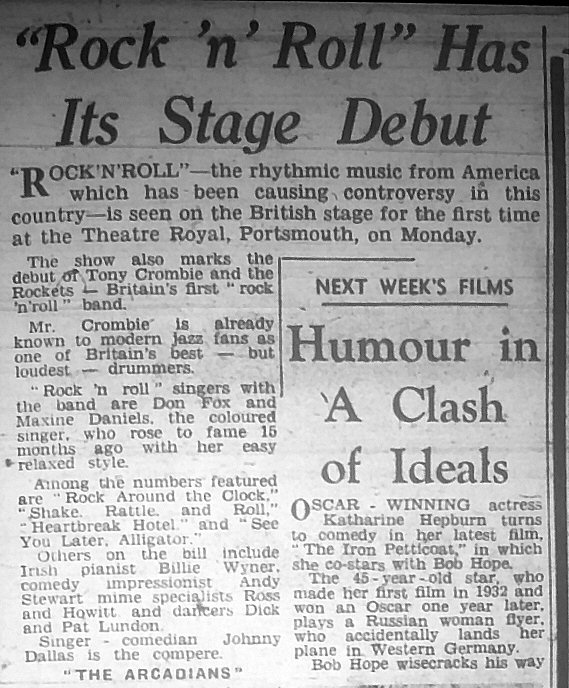
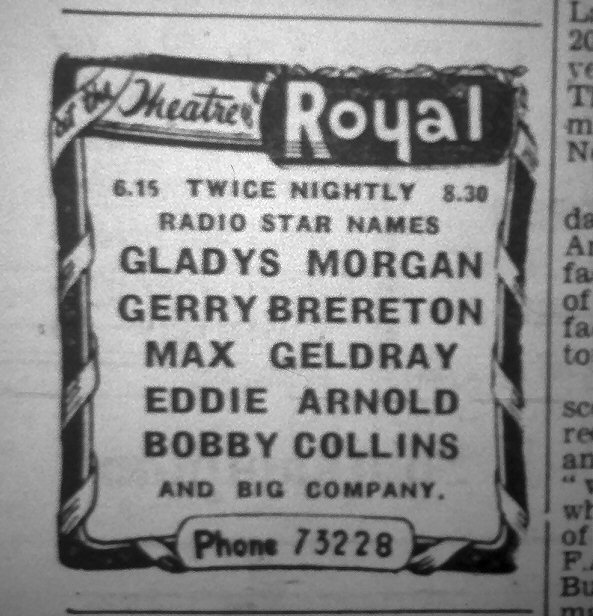
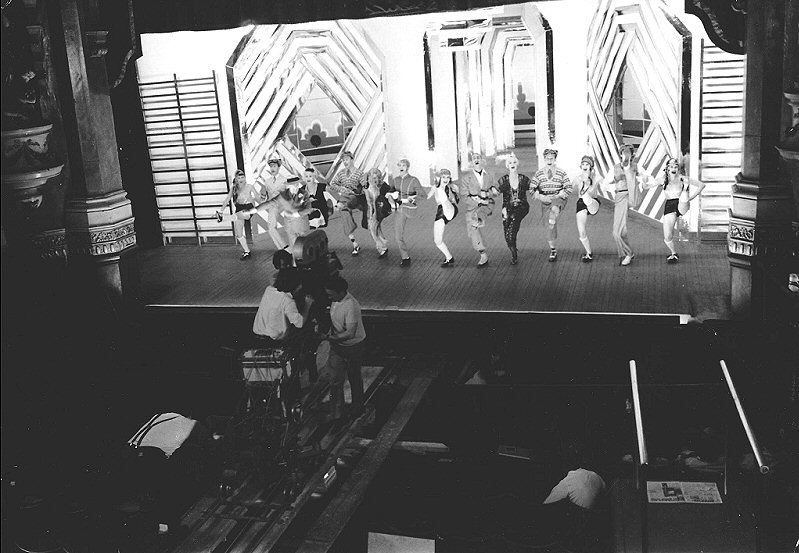
Filming in 1971 of The Boyfriend shows the end of the first act. Brian Murphy, Barbara Windsor and Twiggy
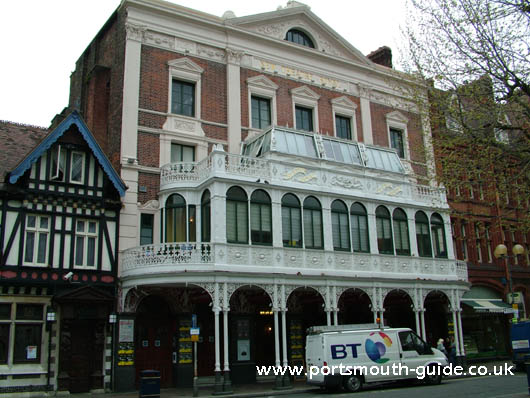
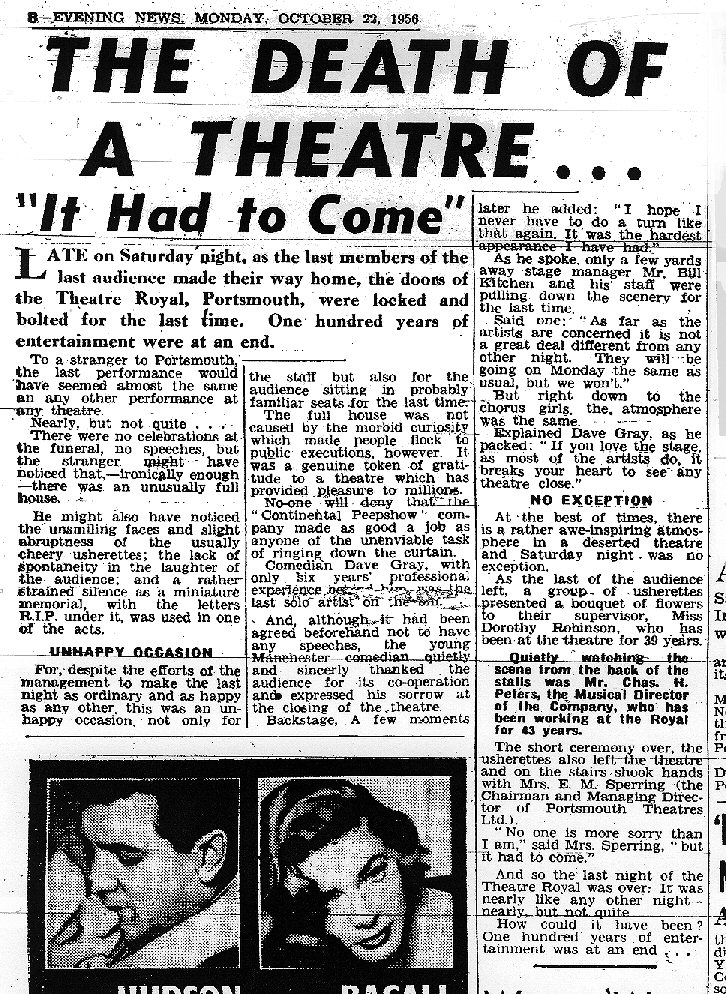
|
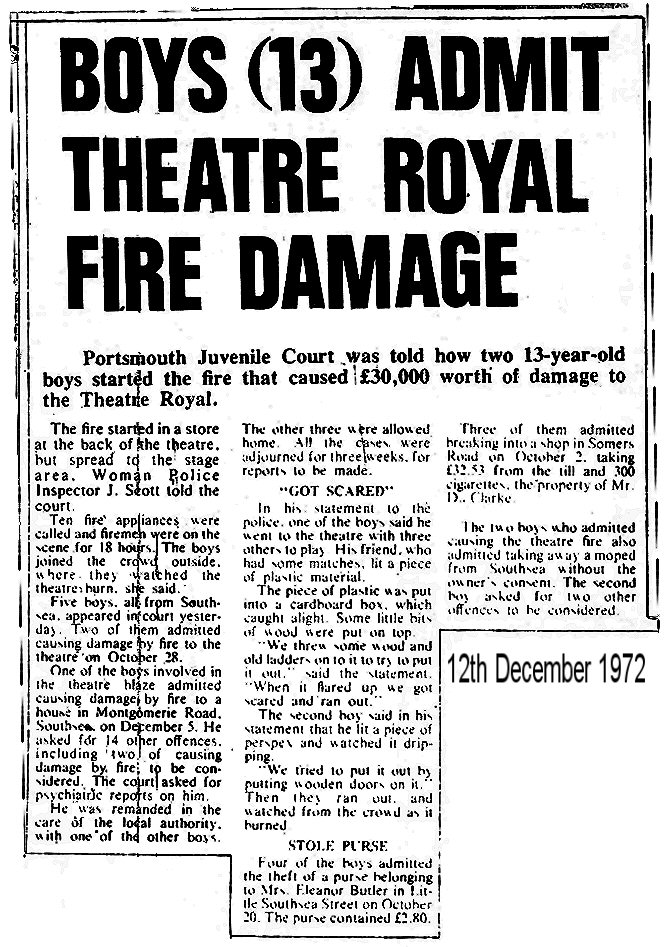
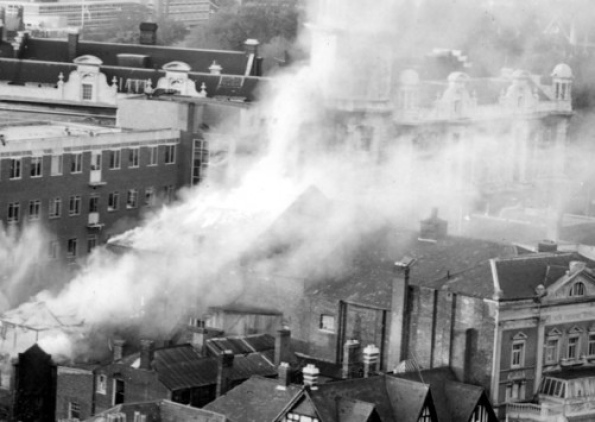
The day in 1972 that the Theatre Royal died again.
Published on Wednesday 30 January 2013 Portsmouth NEWS
By Chris Owen
It was 1972 when children got into the New Theatre Royal and lit fireworks setting the Victorian building alight. Only now, 41 years later, is the devastating damage about to be put right.
Photographs from the theatre’s archives catch the drama of that dark day in Portsmouth’s theatrical history.
But, as we report today, work is finally about to start to regenerate the theatre.
On the day of the fire a member of the public alerted a patrolling policeman to the smoke. But by the time the fire brigade arrived the rear of the theatre was ablaze.
Early in the fire the ropes of the safety curtain burned through, causing it to fall into place saving the auditorium.
Ironically, the curtain had been faulty and temperamental for many years and regularly refused to operate.
The stage, fly tower and the entire building behind the proscenium arch was destroyed.
The building had already been earmarked for demolition, provoking outrage and a huge campaign to save it. After the fire the bulldozers were threatened again but the Theatre Royal Society was there to oppose the plan and began a long campaign to restore it.
|
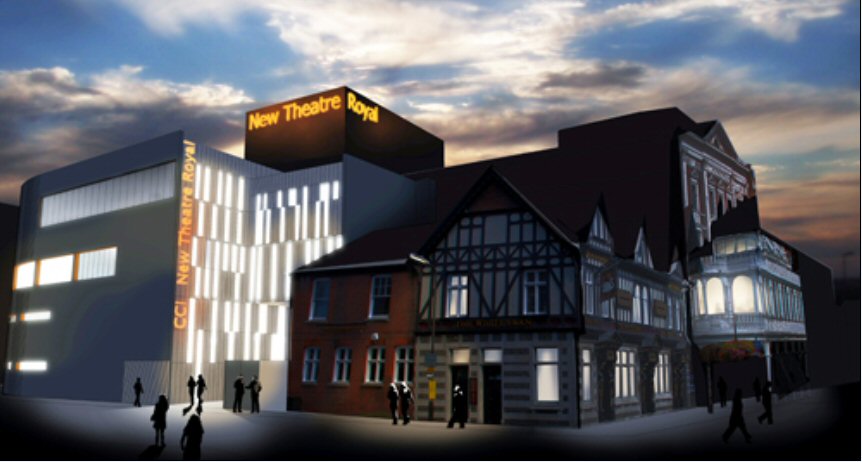
The new, New Theatre Royal in 2014
|































